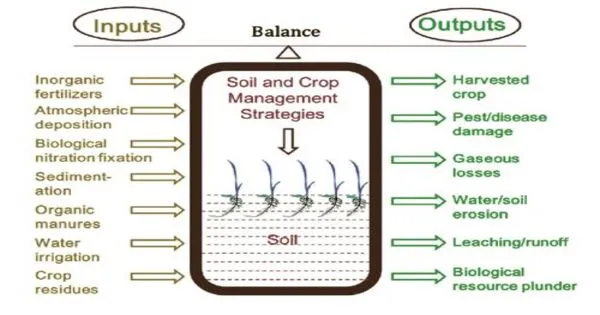Nutrient budgets provide information on the balance of agricultural inputs and outputs. It is a term in agriculture, ecology, and environmental science that is used to measure and quantify the flow of nutrients through a specific system or ecosystem. In a nutshell, they compare nutrients supplied to soil to nutrients absorbed by crops. It aids scientists, farmers, and policymakers in understanding the movement of nutrients such as nitrogen, phosphorus, and potassium throughout an ecosystem or agricultural system.
A nutrition budget considers all nutrient inputs on a farm as well as those removed from the soil. Fertilizer is the most obvious source of nutrients in this situation, but it is just part of the issue. Other inputs come with rainfall, in supplements brought on to the farm and in effluent – either farm or dairy factory – spread on the land. Nutrient budgets are valuable tools for managing nutrient resources, preventing pollution, and optimizing nutrient use efficiency.
Furthermore, nutrients can be transported about the farm – from a silage-growing region to a feed-out area, from paddock to raceway, and within paddocks in dung and urine patches. Nutrients are lost from farms through stock sales, products (meat, milk, wool), crops sold or fed off farm, and processes such as nitrate leaching, volatilization, and phosphate run-off, among others.
Importance
An accurate nutrient budget is an important tool for detecting potential problems caused by (i) a nutrient surplus (inputs>outputs), which leads to nutrient accumulation and increased risk of loss, or (ii) a deficit (outputs>inputs), which depletes nutrient reserves and increases the risk of deficiencies and reduced crop yields. They also give regulatory agencies with a simple, comparative measure of environmental impact. Overall, nutrient budgets serve to guarantee that farming operations are efficient, cost-effective, and environmentally sustainable.
Nutrients can be kept in the system for varied amounts of time. Soil, for example, may retain nutrients for long periods of time, while trees can store nutrients in biomass. Understanding how nutrients are stored can help forecast nutrient availability in the future.
Management and Decision-Making
Nutrient budgets are critical tools for making educated agricultural and environmental management decisions. Farmers can use them to optimize fertilizer application in order to save money and reduce environmental effect. Environmental managers can use them to assess the effects of nutrient pollution and devise mitigation methods.
Environmental Impact Assessment
The environmental impact of human activities is assessed using nutrient budgets. Excess nutrient inputs into ecosystems, such as nitrogen and phosphorus in water bodies, can cause eutrophication, which has negative ecological and economic effects.
















